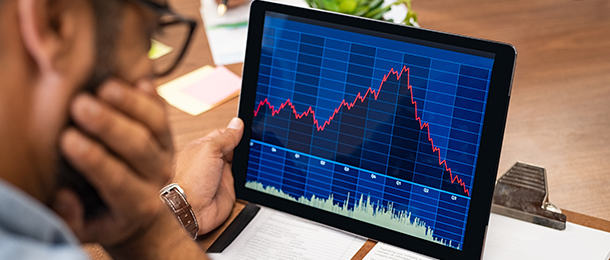A number of key changes have still yet to take place before it can be claimed the decline in investment markets has reached its lowest point based on previous market downturns, according to a manager with an international funds management firm.
MFS Investment Management portfolio manager and global investment strategist Rob Almeida said recent rises in the S&P 500 Index had restarted speculation the market had bottomed.
Almeida noted while that was impossible to measure without hindsight, economic cycles end when imbalances become too large and are corrected and this had characterised other downturns in the past two decades.
“In the late 1990s, the excesses were in technology hardware. At the turn of the century, that overbuild was painfully corrected in the broad economy, in general, and in technology and Internet stocks, in particular,” he explained.
“A few years later, a new bubble emerged in the form of too much credit being extended to US consumers, particularly mortgage borrowers, which of course led to gross excesses in residential real estate and banking, the correction of which spawned the global financial crisis (GFC).”
He acknowledged this pattern was not always visible as it did not take place in a single area and pointed to the easy availability of public and private credit from the end of the GFC until the start of the COVID-19 pandemic in 2020.
“Rather than using capital to enhance organic revenue and profit growth, businesses financed higher dividend payouts, share repurchases and acquisitions to generate inorganic growth across all sectors, excluding financials,” he said.
“This explains why the 2010s produced outsized profits, but saw a feeble economic expansion and a historic gap in wealth between the owners of capital and labour.”
Almeida observed credit availability dried up in February 2020 and an economic and market rebalancing began, but this was cut short by governments injecting money into their economies, and until excess financial leverage, underinvestment in production and overheated profits were corrected, a strong recovery was unlikely to take hold.
“The pandemic-era stimulus didn’t replenish depleted capital stock or lead to investment in productive assets, which would have set the stage for sustainable economic growth,” he said.
“Instead of investing in plant and equipment or research and development, the [US] government issued previously unimaginable quantities of debt so that consumers could buy more goods than the economy could produce. The result? Inflation running at 9 per cent.”
He predicted growth would decline along with corporate revenues, which would be driven down by fixed costs that had increased due to the rising cost of labour and interest on debt.
“Historically, markets have tended to bottom when investors stop caring and no longer ask: ‘Is this the bottom?’ I’ve lived through that twice and I don’t think we’re there yet,” he concluded.
''

